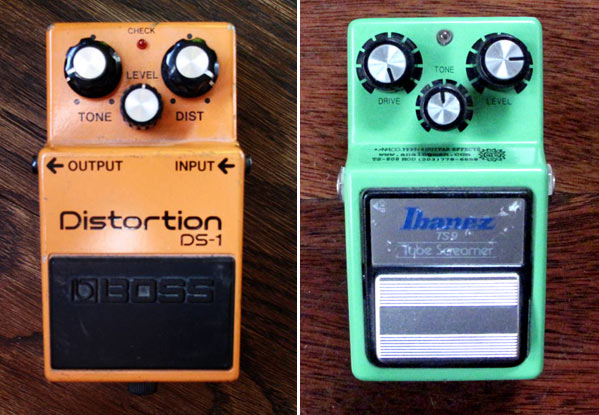I have received some feedback suggesting I should do more “beginner” posts about guitar tone and effects. I have also noticed some interesting questions in the google keywords leading to this site. One grabbed my attention: “What is the difference between the Satchurator and the Ice 9 overdrive?”. These two pedals are designed by VOX in collaboration with Joe Satriani and the answer is: the Satchurator is a distortion whereas the Ice 9 is an overdrive.
So what is the difference between a distortion and an overdrive? To put it simply, an overdrive pedal aims at simulating the creamy sound of an overdriven tube amp whereas a distortion does not try to simulate reality and usually offers more gain and is more aggressive.

Way back in the sixties, the only way to get any kind of overdriven tone consisted in just cranking the volume of your tube amp to 10 or 11 if you could. And these amps had no master volume so they were really really loud. Fuzz pedals were the first attempt to reproduce this tone without having to crank your amp. They were really popular in the late sixties but they kind of missed the point and are really a different breed of effect. I will dedicate a post to fuzz pedals very soon!
Later on, talented electronics wizards invented “overdrive” pedals which provided a less harsh tone. Some of them truly approached the singing sound of an overdriven tube amp, so loved by blues and classic rock players. The Ibanez Tube Screamer released in the late 70s is an example of overdrive pedal which became really successful (see my post about it).
Around the same time, other wizards invented distortion pedals which generally offered a raunchier, dirtier, “gainier” tone. The BOSS DS-1 used a lot by Joe Satriani or the Proco Rat are two famous examples.
Then as they did before with fuzz pedals, guitarists combined the tube saturation of their amp with overdrive or distortion pedals, creating entirely new tones… but this is a story for later…

So, if I’m getting this right, both overdrive and distortion pedals work by saturating the signal from the guitar, the overdrive trying to mimic a cranked up tube amp and the distortion just do its thing, creating a new sound?
That’s right mister kill the duck!
Thanks, I always wondered about the difference but never bothered looking it up until I saw this post.